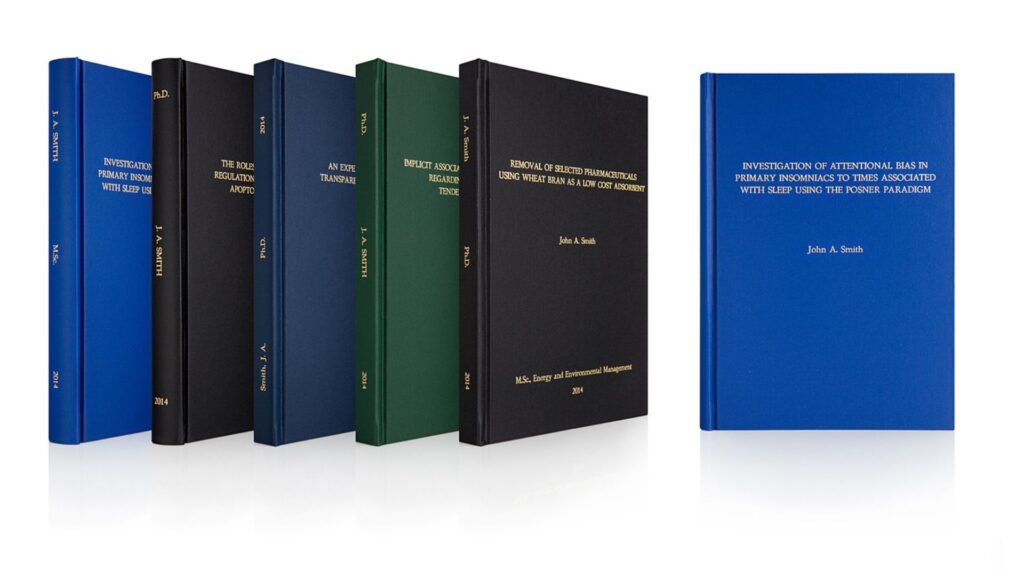
Document binding plays a vital role in both academic and business environments—but the goals, expectations, and preferred methods often differ between the two. Whether you’re preparing a university thesis or presenting a corporate report, selecting the right binding method enhances the professionalism, durability, and usability of your document. This article explores the distinctions between academic and business binding needs to help you choose the most appropriate approach for your project.

Purpose Drives Presentation
The purpose of a document significantly influences how it should be bound. Academic documents are often evaluated and archived, while business documents are typically presented or circulated for strategic or operational use.
Academic Use:
-
Emphasizes long-term preservation and formal presentation
-
Used for grading, research, and archiving
-
Must adhere to institutional guidelines
Business Use:
-
Prioritizes visual impact, accessibility, and portability
-
Used for presentations, meetings, proposals, and marketing
-
Allows for greater flexibility in style and format
Common Binding Methods in Academic Settings
Academic documents typically require formality, durability, and structure. Universities often specify binding standards for theses and dissertations.
Thermal Binding
-
Clean, book-like finish
-
Frequently required for thesis and dissertation submission
-
Pages are glued into a rigid spine
-
Not editable once bound
Perfect Binding
-
Softcover binding, similar to paperback books
-
Provides a professional, finished look
-
Ideal for academic publishing and portfolios
Comb or Coil Binding
-
Used for study guides, lab reports, and student projects
-
Inexpensive and easy to produce
-
Allows for flat-lay reading and note-taking
Hardcover Binding (Library Binding)
-
Required for final thesis submission in many institutions
-
Provides archival durability
-
Can include gold-stamped text on spine and cover
Common Binding Methods in Business Settings
In the business world, functionality and presentation often outweigh permanence. Documents may be reused, updated, or customized for different audiences.
Spiral Binding
-
Ideal for training manuals, reports, and handbooks
-
Allows for full 360° rotation and flat-lay reading
-
Durable and easy to handle during meetings
Wire-O Binding
-
Offers a cleaner, more professional look than plastic coils
-
Suitable for calendars, proposals, or executive presentations
-
Often used when design is key
Thermal or Perfect Binding
-
Used for high-end client proposals or product catalogs
-
Provides a polished, book-like appearance
-
Good for executive summaries or leave-behinds
Stapled (Saddle Stitch)
-
Best for short reports, newsletters, or small brochures
-
Affordable and fast to produce
-
Not suitable for documents over 60 pages
Key Differences: Academic vs. Business Binding
| Aspect | Academic Use | Business Use |
|---|---|---|
| Formality | High – must follow strict guidelines | Varies – depends on audience |
| Durability | Often permanent or archival | Often temporary or frequently updated |
| Binding Types | Thermal, hardcover, perfect | Spiral, wire-o, saddle stitch |
| Editing Flexibility | Limited once bound | Often allows re-binding or updates |
| Design Aesthetic | Minimal, professional | Branded, visual impact is important |
Choosing the Right Method
Before selecting a binding method, ask the following:
-
What is the document’s purpose? Submission, presentation, reference, or archive?
-
Who is the audience? A professor, boardroom, or client?
-
Will the document be updated or reused? Choose editable methods for dynamic content.
-
What are the institution or company standards? Always verify formatting and submission requirements.
Conclusion
Academic and business environments demand different things from document binding. Academic documents focus on formality, longevity, and regulation, while business documents emphasize usability, branding, and speed. Understanding these differences helps ensure your final product aligns with your goals, meets expectations, and leaves a lasting impression on its intended audience.






